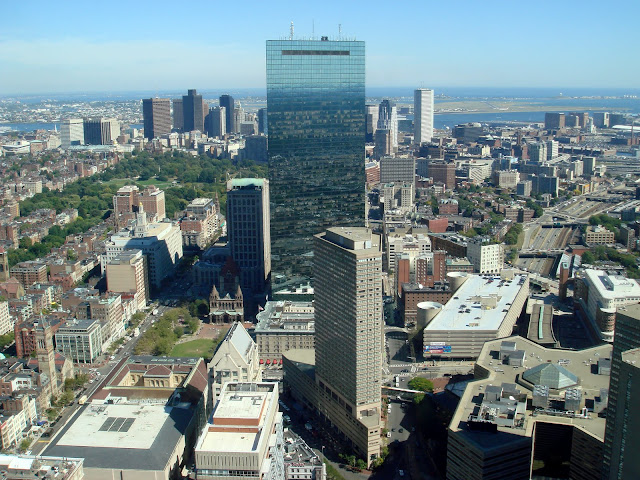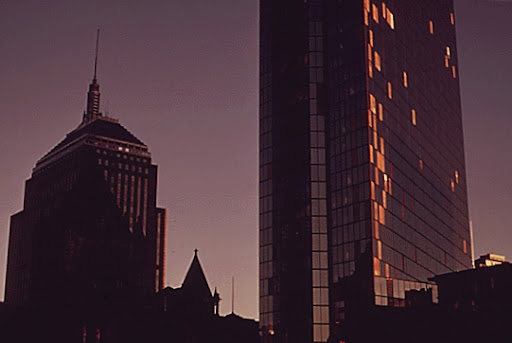
I was surprised to read that Boston's John Hancock Tower received the AIA's 25-Year Award. Why surprised? Mainly because many people know this building more for its technical failings than its aesthetic triumphs. Designed by I.M. Pei, the construction of the tower was an unmitigated disaster. The temporary foundation walls buckled, damaging utility lines and nearby buildings,

including the adjacent Trinity Church. Once the building was up, it's trademark blue mirror-glass panels began failing, cracking in place, and frequently falling out of their frames and plummeting to Copley Square below. The problem was so bad that the building earned the nickname "the Plywood Palace," for all of its plywood replacement panels, and guards were hired to stand in the square and alert passerby of falling panes.After all the glass was replaced (at a cost of $5 to $7 million) the place finally opened, only to face yet another issue. The building's sway was so severe that upper floor occupants experienced motion sickness, necessitating the installation of a pair of 300-ton tuned mass dampers to keep office workers from vomiting at their desks. Even with these dampers, it was eventually discovered that the building might collapse under certain wind loading conditions, which demanded a fix involving 1,500 tons of additional diagonal steel bracing (and another $5 million.) All told, the building's opening was delayed from 1971 to 1976, and its cost ballooned from $75 million to $175 million. Hardly a success story.
But wait! The American Institute of Architects saw fit to confer a National Honor Award on the building in 1977. Granted, the building has its aesthetic successes, and many of its failures can be blamed on lackluster structural engineering, but can form alone make up for the debacle that was this building's construction? The building presents a novel form, makes some efforts to respect its historic neighbors, and did achieve a reflective monolithic appearance. Still the architects blew it with all the glass that made up that great monolith the first time around, and cost their client a fortune in the process.
And now, some 35 years later, the AIA has returned to lavish another reward on the building. It never ceases to amaze me how narrow the judgement of architects can be. It is reflective of a disconnect between the profession and simple common sense, where a project can't be considered an unmitigated success if it is as beset by problems as was the Hancock. Adding to this disconnect is the AIA's press release which heaps praise on the building, which it says, "has demonstrated excellence in function, in the distinguished execution of its original program, and in the creative aspects of its statement by today’s standards." Of course there is nary a mention of the many failings of the design. Perhaps though, all of the tribulations, the doubling of budgets, the infinite change orders, and design do-overs are worth it to achieve a great final product. But I don't think this building is all that great. And there must be better all-around projects that are far more deserving of this award.
Images courtesy of Wikimedia Commons.



